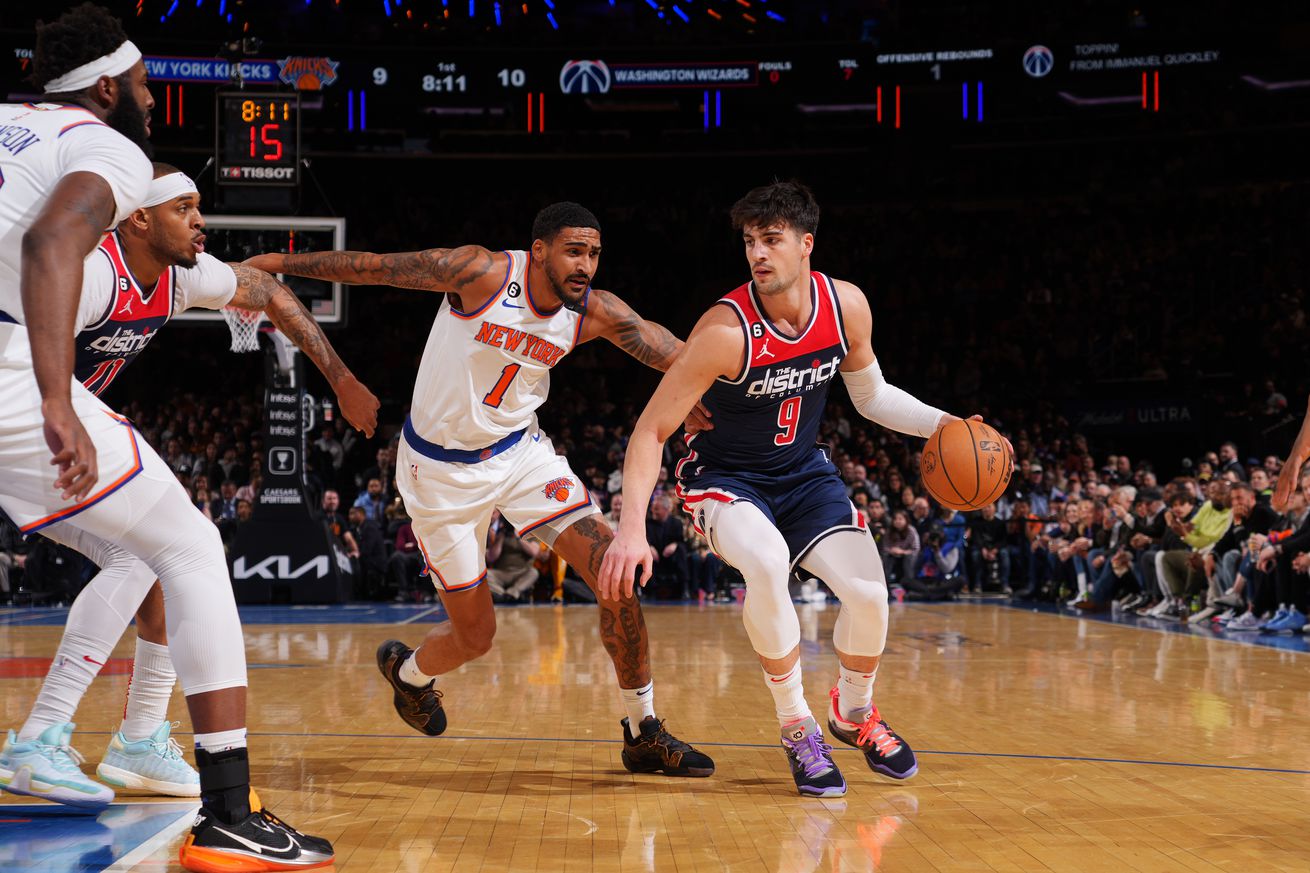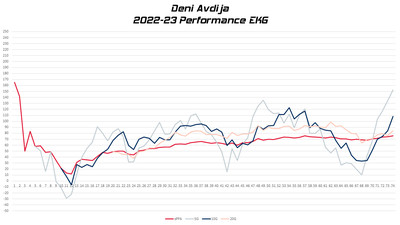
The NBA Draft is less than a month away, and the NBA Finals tip off Thursday night.
Naturally, I’m pondering Deni Avdija and his NBA future. Which to be honest, is not something I view with much optimism. He has his strengths and weaknesses. He’ll need to either improve his skills or figure out how to adapt to them.
I still hope he can develop into a good NBA player. But hope isn’t a substitute for analysis, and…the analyst part of my brain is dubious.
Reason for hope: Avdija is just 22 years old, an age at which most players (humans) are still capable of improving. Youth does not mean automatic improvement, however. He’s played significant minutes as a starter and a reserve in his three seasons. He improved from rookie to second year and plateaued in year three.
Let’s start with the good. He’s tough, feisty and competitive. He doesn’t back down from defensive challenges, even when he’s getting his ass handed to him. He’s fast in the open court, quick enough to defend smaller players (though he struggles with speed) and strong enough to guard up.
He’s a willing and effective rebounder, who’s at his best in grab-and-go transition or when he can drive to his right in the halfcourt.
He’s a creative passer and solid playmaker (5.1 per 100 team possessions).
He earned a reputation in his second season as a good defender, though his impact on that end of the floor slipped in 2022-23. NBA tracking data showed that opponents shot about as well from the floor when he was the closest defender as they normally did, and the team was about the same defensively when he was out there as when he wasn’t.
Now to the weaknesses: after spending time last offseason working with famed skills coach Drew Hanlen — with focus on ball handling and shooting — and playing international ball with Greece, Avdija shot worse from three point range and posted the lowest effective field goal percentage of his young career. He hit career highs in assists and turnovers, and posted his worst assist-to-turnover ratio so far.
And while being feisty and competitive is good, he fouls a ton (5.0 per 100 possessions — about the same as the 5.1 per 100 he posted as a rookie), and his complaining about calls is excessive and unwarranted.
If you want to remain optimistic about his future, it’s best to stick to a handful of stretches when he played well. For example, he closed the season with a 153 score in my Player Production Average metric (in PPA, average is 100 and higher is better). During that span, he tallied 26.7 points, 13.9 rebounds and 7.8 assists per 100 team possessions with an efg of 72.4% and an offensive rating of 121 points produced per 100 possessions. (league average was just under 115). It was his best five-game stretch of the season.
If you want to remain optimistic about his future, ignore the preceding five games where his PPA was 42…which is a hair below replacement level (45). And ignore that his efg for the season was 49.7%, and his offensive rating was 106. That’s almost nine points per 100 possessions below average despite a usage rate of 17.2% (average is 20%).
Sustaining that kind of play — the good kind — is the challenge. He failed this season to have a 20-game stretch that rated above average (though he did get to 99 for the 20 games from January 18 against the New York Knicks to March 5 against Milwaukee).
Avoid falling into the “he just needs to be consistent” trap. “Consistent” means doing something the same way over time. Good players perform as good (and better) than Avdija’s best stretches, but they do it over large swaths of seasons (and careers).
This season, Avdija’s performance rated below average in 64% of his games, according to my PPA metric. He was at or below replacement level 38%, and was a net negative producer 26%.

Red = full season PPA after each game
Gray = 5-game rolling PPA after each game
Blue = 10-game rolling PPA after each game
Pink = 20-game rolling PPA after each game